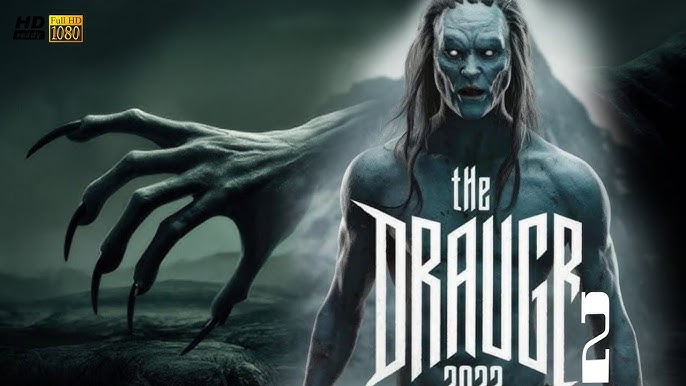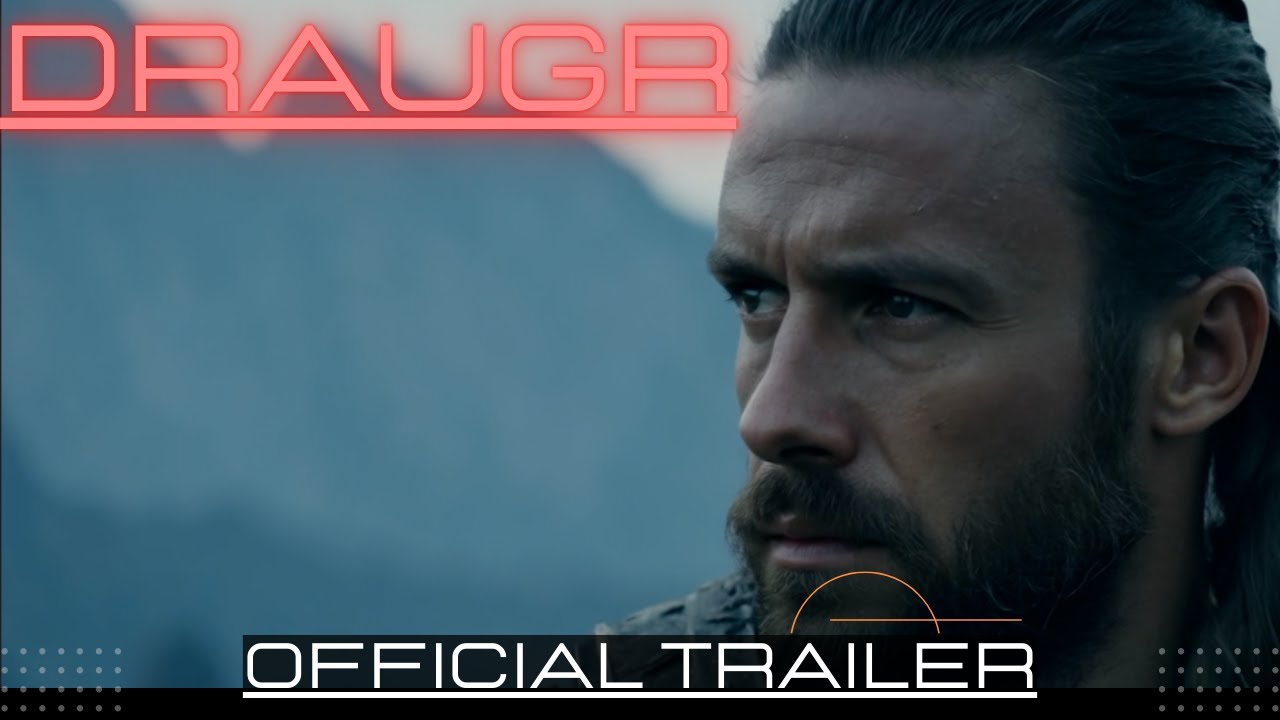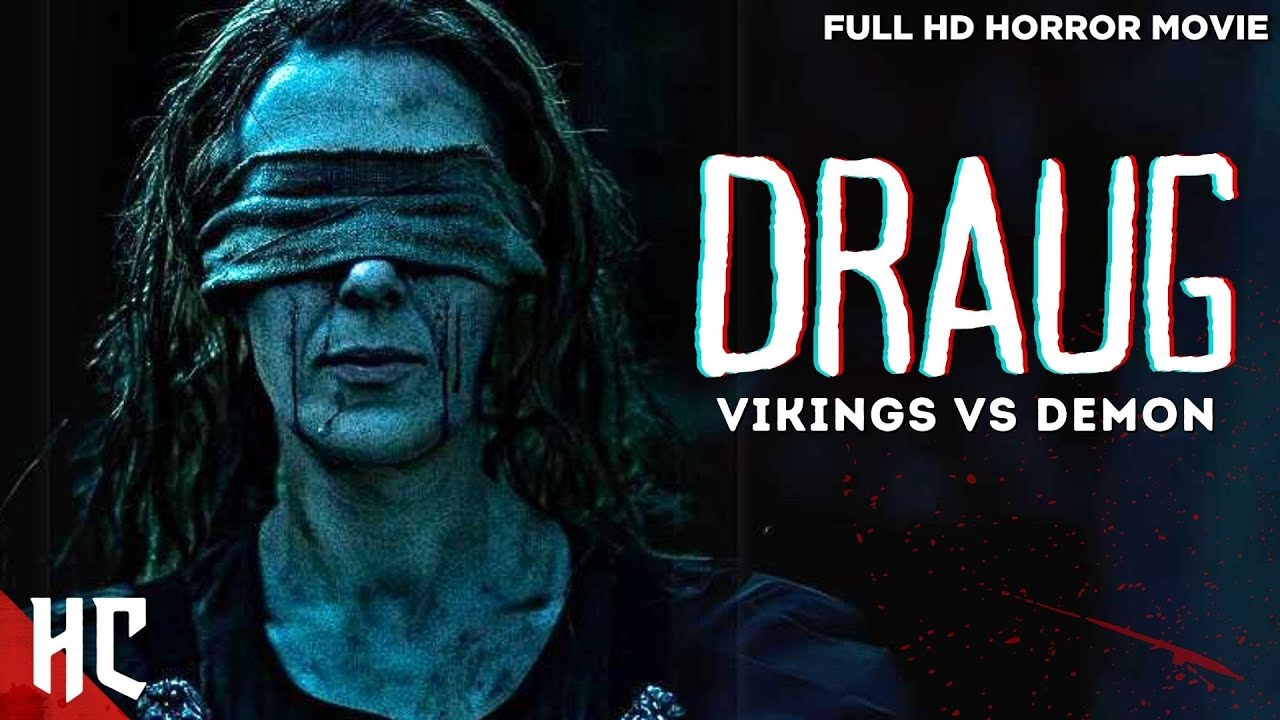The Draugr (2025) – Unearthing Ancient Terror

The Draugr (2025) rises from the frozen soil of Norse myth to deliver one of the most chilling and intelligent horror films of the decade — a masterclass in atmospheric dread and psychological decay. Blending archaeological mystery with ancient legend, this film transforms the quiet cold of Scandinavia into a living nightmare, where every shadow breathes and every heartbeat echoes across centuries.
The story follows Dr. Elin Falk (Rebecca Ferguson), a brilliant yet emotionally fractured archaeologist leading an excavation in a remote fjord of northern Norway. Her team uncovers a perfectly preserved Viking burial mound — sealed for over a thousand years — containing the remains of a warrior chieftain and artifacts hinting at a ritual unlike any known burial practice. Against local warnings, Elin orders the tomb opened. Within hours, strange occurrences begin: frozen air that hums with whispers, animals fleeing the site, and the crew plagued by hallucinations of drowning in ice. Something beneath the mountain has awakened — something old enough to remember when gods still walked the earth.
Director Robert Eggers (The Witch, The Northman) crafts an experience that feels less like a film and more like an invocation. His command of tone is absolute: stark, brutal, and mesmerizing. The cinematography by Jarin Blaschke captures Norway’s endless twilight with haunting precision — blue light glinting off ancient runes, fog rolling across black ice, and flames flickering in the hollow eyes of carved idols. Every frame feels carved from myth, drenched in pagan foreboding.
Rebecca Ferguson gives the performance of her career. As Elin, she’s both scholar and skeptic — a woman unraveling before our eyes. Her descent mirrors that of the ancient dead she disturbs. Through subtle gestures — trembling hands, sleepless eyes — Ferguson communicates a soul cracking under unseen weight. Her grief, stemming from the recent death of her son, becomes the emotional key to the story’s horror: the Draugr doesn’t merely kill — it possesses through sorrow.
Supporting performances add depth and texture to the icy terror. Mads Mikkelsen is extraordinary as Henrik Strand, a local historian who serves as both ally and omen. His calm warnings conceal a grim history — generations of his bloodline have guarded the mound. Florence Pugh joins as Freya, a graduate student driven by faith rather than science, who begins to see the Draugr not as evil but as divine justice. Their dynamic crackles with tension as belief collides with reason.
The creature itself — the Draugr — is a masterpiece of practical and digital artistry. Unlike modern horror monsters, it is never fully revealed until the final act. Glimpses of movement beneath the frost, the crunch of ice echoing behind characters, and distorted Old Norse whispers build unbearable tension. When the Draugr finally emerges — towering, skeletal, its armor fused with frozen flesh — it is less a monster than a god of decay, an ancient reminder that death was once sacred.
The sound design is extraordinary. Silence becomes its own language, broken only by the creak of wood, the moan of wind, and the guttural hymns of something buried alive. Composer Hildur Guðnadóttir (Joker, Chernobyl) creates an otherworldly score of low drones, mournful cellos, and human breath, crafting an auditory landscape that feels ritualistic, even hallucinatory.

Thematically, The Draugr is about guilt and resurrection — both spiritual and literal. It explores humanity’s arrogance in disturbing the past, the illusion of progress, and the inevitability of nature reclaiming what is hers. The film asks: what if the dead we dig up are not waiting for peace, but for vengeance? Through Elin’s journey, we see the cost of obsession and the terror of realizing that some truths are meant to stay buried.
The pacing is deliberate — a slow burn that builds to an eruption of mythic horror. Eggers refuses cheap scares; instead, dread seeps in like frostbite, gradual and irreversible. When violence finally erupts, it feels primal — not cinematic spectacle but ritualistic punishment. The final act, set in a subterranean temple carved into ice, is both breathtaking and horrifying. As Elin confronts the Draugr, she realizes it is not merely a revenant — it is the collective will of the forgotten dead, summoned by her own grief.
The film’s climax delivers catharsis wrapped in terror. In a stunning visual sequence, Elin sets fire to the burial mound from within, light and shadow dancing as the Draugr reaches for her in silence. As she burns, she smiles — realizing that the dead are not her enemy, but her release. The mountain collapses into the sea, sealing the tomb once more.
In conclusion, The Draugr (2025) is a haunting triumph — a meditation on death, memory, and the price of trespassing the sacred. It’s horror elevated to mythology, where every scream carries ancient echoes. With extraordinary performances, mesmerizing visuals, and storytelling that merges intellect with terror, it stands beside The Witch and Hereditary as a modern masterpiece of existential horror.
The past was never buried.
It was only waiting to be found. ❄️🩸
Related movies :
Related movies :
Related movies :
Related movies :
Related movies :
Related movies :











